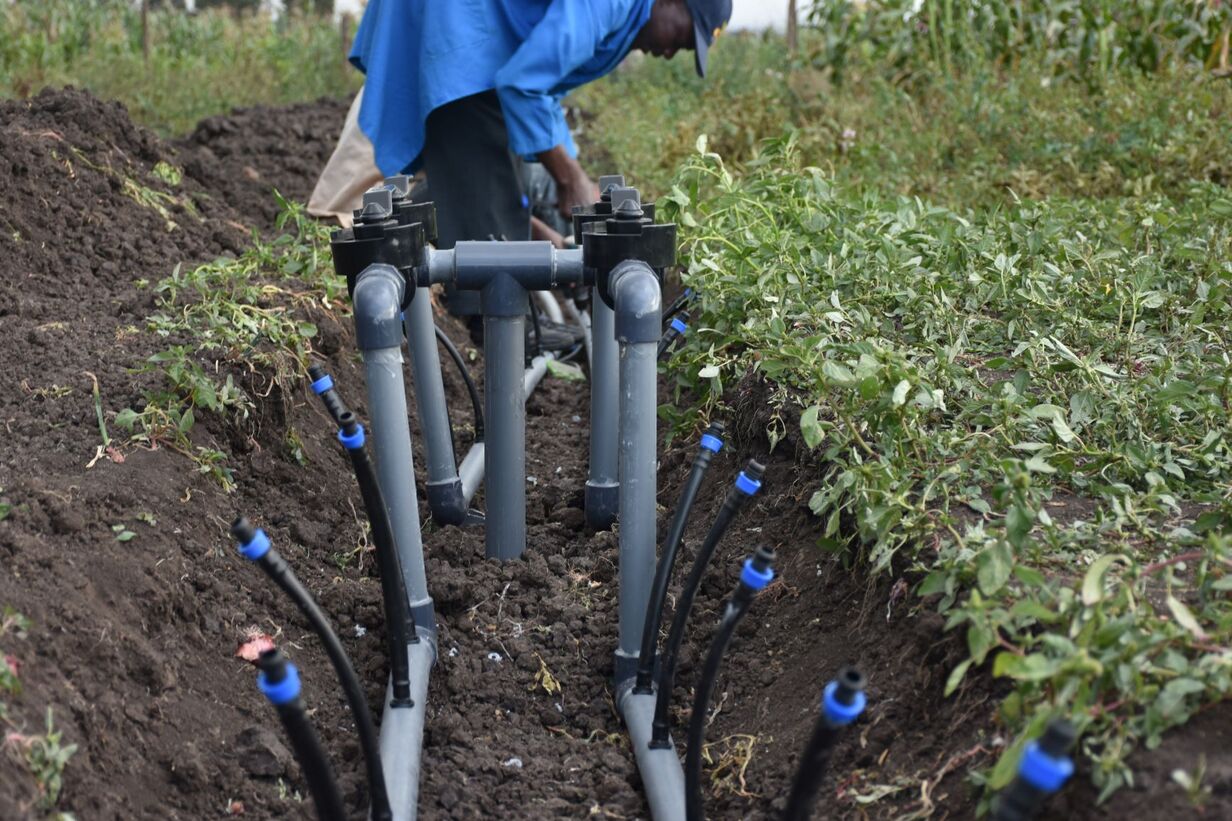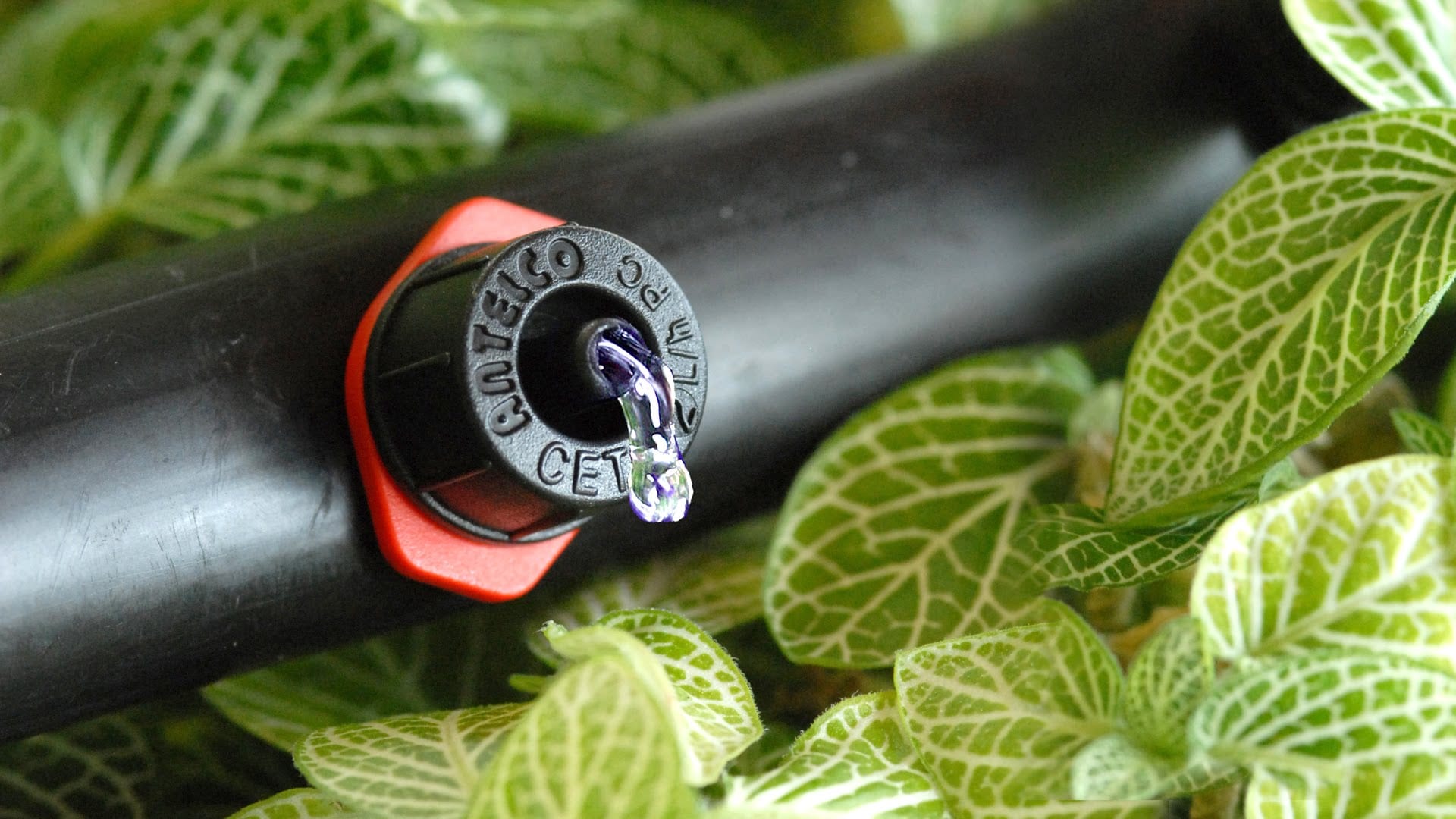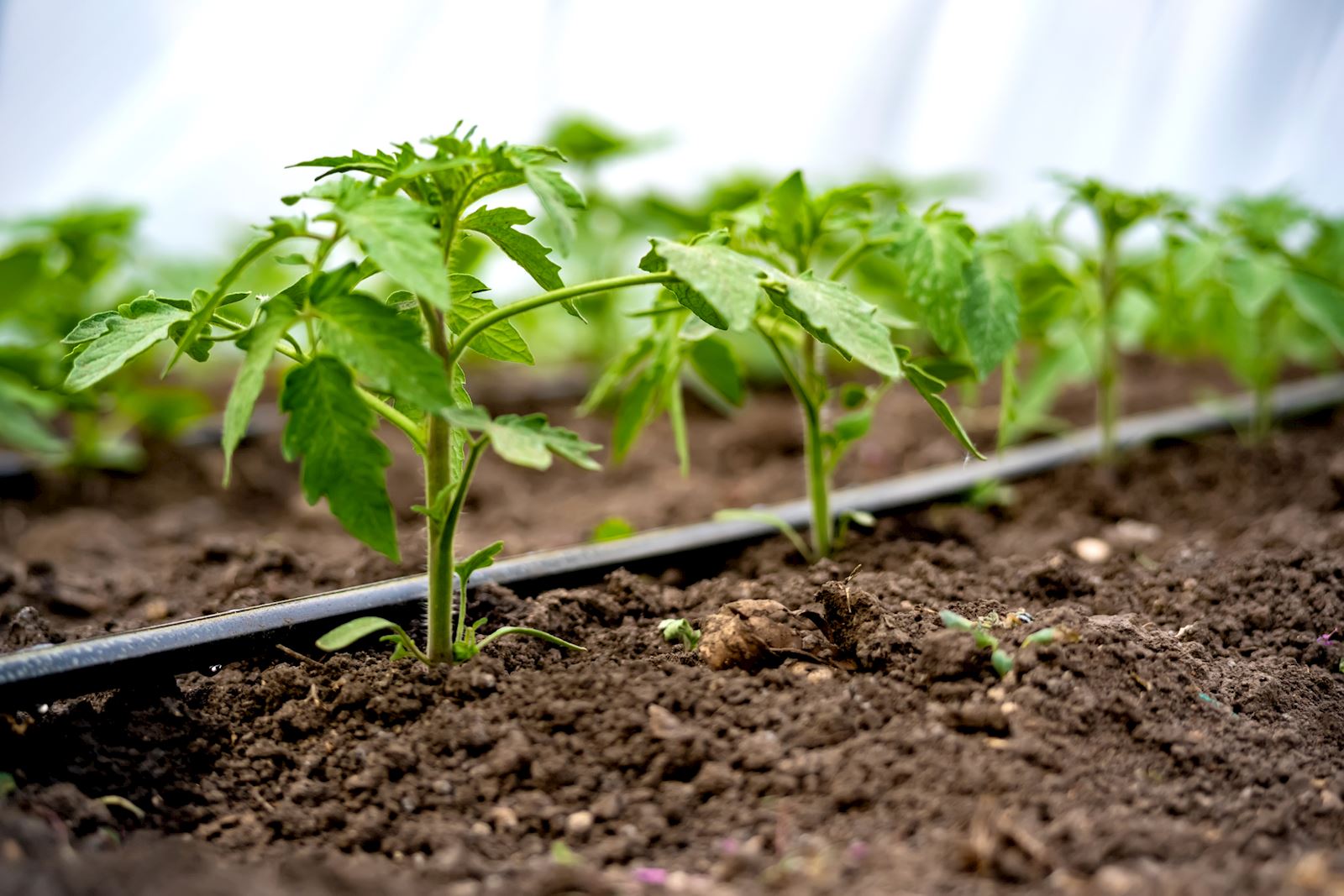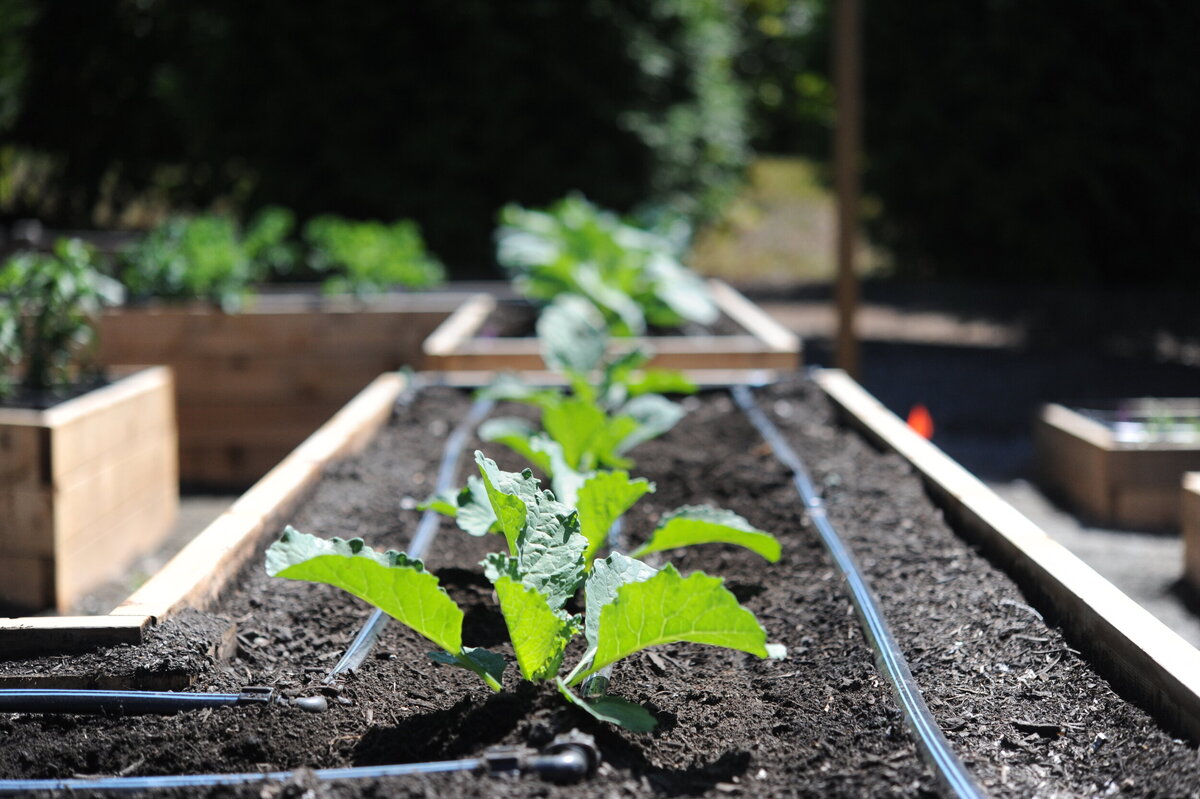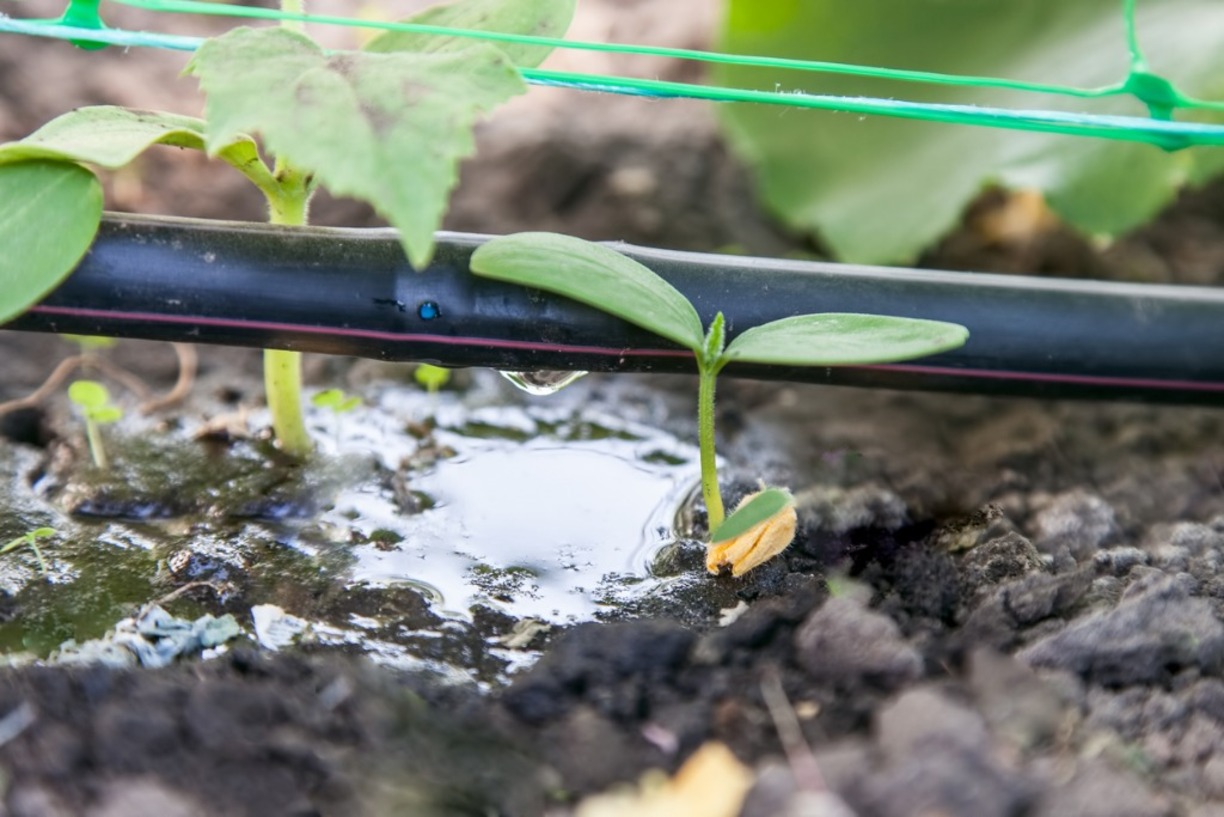Home>Gardening Tips and Tricks>Maximizing Yield>How To Add Fertilizer To Drip Irrigation
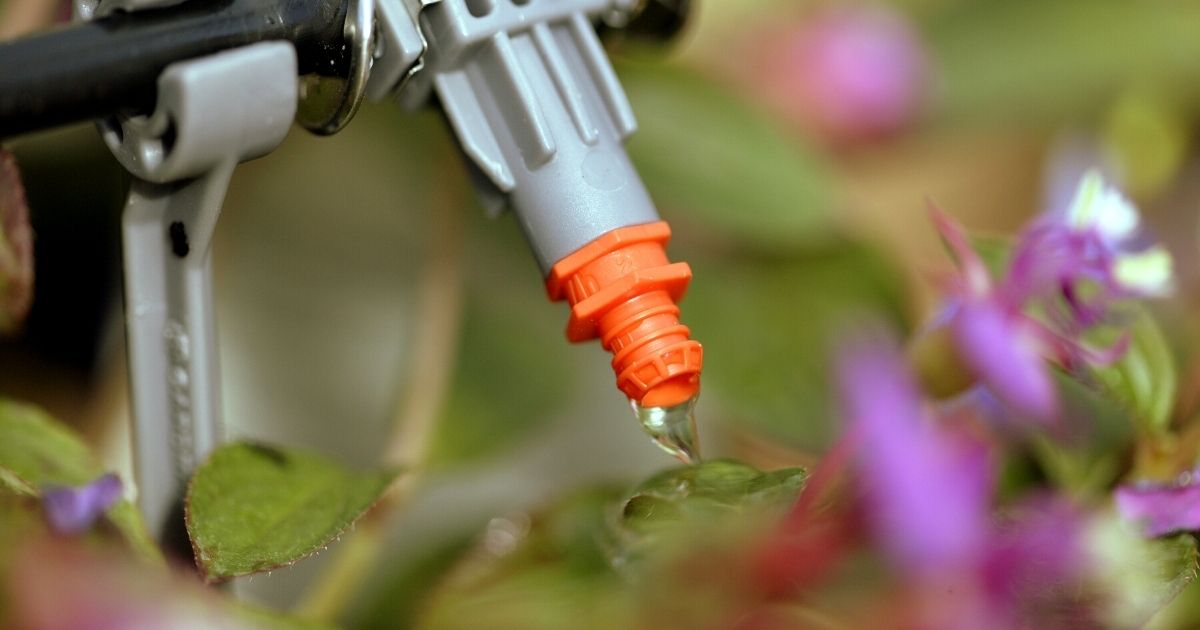

Maximizing Yield
How To Add Fertilizer To Drip Irrigation
Published: November 16, 2023
Learn how to maximize yield in your drip irrigation system by adding fertilizer. Follow our step-by-step guide on adding fertilizer to your drip irrigation to help your plants thrive.
(Many of the links in this article redirect to a specific reviewed product. Your purchase of these products through affiliate links helps to generate commission for Chicagolandgardening.com, at no extra cost. Learn more)
Table of Contents
Introduction
Welcome to the world of drip irrigation, where water efficiency meets plant nutrition. In traditional irrigation systems, water and fertilizer are applied separately, leading to wastage and uneven distribution of nutrients. However, with drip irrigation, fertilizers can be easily added directly to the system, maximizing nutrient uptake by plants and minimizing environmental impact.
In this article, we will explore the benefits of using fertilizers in drip irrigation systems, the types of fertilizers suitable for this method, the importance of proper fertilizer application, and the steps to successfully add fertilizers to a drip irrigation system. Whether you are a beginner or experienced gardener, this guide will provide valuable insights to help you achieve healthier, more productive plants.
As gardeners and farmers strive to optimize crop yield, it is crucial to understand the role of fertilizers in supporting plant growth. Fertilizers contain essential nutrients that plants require for their various physiological processes. These nutrients, such as nitrogen, phosphorus, and potassium, are vital for promoting root development, flowering, fruiting, and overall plant health.
Drip irrigation is a highly efficient watering method that delivers water directly to the root zone, reducing water loss through evaporation and runoff. By integrating fertilizers into the drip irrigation system, we can enhance nutrient delivery to the plants’ root systems, ensuring that they receive a steady supply of the essential elements they need to thrive.
The advantages of using fertilizers in drip irrigation systems go beyond simply providing nutrients to the plants. By utilizing this controlled and precise method, we can reduce fertilizer waste, minimize the risk of nutrient leaching, and prevent fertilizers from entering nearby water bodies. This environmentally-friendly approach promotes sustainable agriculture practices while maximizing crop yield.
Now that we understand the importance and benefits of using fertilizers in drip irrigation, let us explore the different types of fertilizers that are suitable for this method.
Benefits of Using Fertilizer in Drip Irrigation
Integrating fertilizers into a drip irrigation system offers a range of benefits for gardeners and farmers alike. Let’s explore some of the significant advantages:
- Enhanced Nutrient Efficiency: Drip irrigation enables targeted delivery of fertilizers directly to the plant’s root zone. This ensures maximum nutrient absorption, minimizing wastage and optimizing nutrient use efficiency. As a result, plants can better utilize the applied fertilizers, leading to improved growth, yield, and overall health.
- Uniform Nutrient Distribution: Unlike traditional broadcasting or surface application methods, drip irrigation ensures even distribution of fertilizers throughout the root zone. This reduces the risk of nutrient deficiencies or toxicities in specific areas and promotes balanced plant nutrition. With proper application, every plant within the irrigation system receives an equal amount of nutrients, resulting in consistent growth and development.
- Water Conservation: Drip irrigation is renowned for its water-saving capabilities. By incorporating fertilizers into the drip system, you can simultaneously provide water and nutrients to plants with minimal wastage. The slow and precise application of water and fertilizers prevents runoff and leaching, reducing the overall water and fertilizer requirements. This not only saves resources but also lowers production costs and helps preserve the environment.
- Reduced Weed Growth: Fertilizers applied through drip irrigation strictly target the plants you intend to nourish. This precision minimizes the availability of nutrients for unwanted weed growth. By delivering nutrients directly to the plant’s root zone, you can significantly reduce the competition between desirable plants and weeds, leading to healthier and more robust crops.
- Environmental Sustainability: By utilizing drip irrigation with fertilizers, you adopt a sustainable agricultural practice that minimizes the negative environmental impacts commonly associated with conventional irrigation and fertilization methods. The efficient use of water and fertilizers reduces pollution and protects groundwater from contamination. Moreover, drip irrigation helps conserve energy by lowering the demand for pumping and reduces the carbon footprint of agricultural operations.
These benefits demonstrate the significant advantages of incorporating fertilizers into drip irrigation systems. By using this approach, you can optimize nutrient delivery, promote water efficiency, reduce weed growth, and contribute to environmental conservation. Now, let’s delve into the different types of fertilizers suitable for drip irrigation.
Types of Fertilizers Suitable for Drip Irrigation
When it comes to selecting fertilizers for drip irrigation systems, it’s essential to choose products that can effectively dissolve in water and won’t clog the system. Here are some types of fertilizers that are commonly used and suitable for drip irrigation:
- Water-Soluble Fertilizers: Water-soluble fertilizers are ideal for drip irrigation systems as they can easily dissolve in water and flow through the irrigation lines without causing clogging. These fertilizers come in a variety of formulations, such as powders, granules, and crystals, and provide a balanced mix of essential nutrients for plants. They have the advantage of quick nutrient availability, allowing plants to absorb the fertilizers readily.
- Drip Irrigation Fertilizers: Some fertilizers are specifically formulated for use with drip irrigation systems. These fertilizers are designed to dissolve easily, preventing clogging or blockage in the system. They often contain a blend of essential nutrients, including nitrogen, phosphorus, and potassium, as well as secondary and micronutrients. Drip irrigation fertilizers ensure proper nutrient delivery to meet the specific needs of plants grown in this type of irrigation method.
- Organic Fertilizers: For gardeners and farmers seeking organic or sustainable options, organic fertilizers can be a great choice. These fertilizers are derived from natural sources such as compost, animal manure, and plant-based materials. Organic fertilizers provide a slower release of nutrients, allowing for steady and long-term nutrient availability to plants. They are commonly available in granular or pellet forms that can be applied to the soil surface or incorporated into the drip irrigation system.
- Fertigation Products: Fertigation involves the process of injecting fertilizers directly into the irrigation water. Fertigation products, such as liquid fertilizers or concentrated solutions, are specifically designed for this purpose. They can be easily added to the drip irrigation system using a fertigation unit or injector. Fertigation allows for precise control and adjustment of nutrient application, ensuring efficient nutrient uptake by plants.
- Controlled-Release Fertilizers: Controlled-release fertilizers are formulated with nutrients encapsulated in a coating that regulates the release of nutrients over time. These fertilizers offer a slow and steady release of nutrients, providing a continuous supply to plants for an extended period. Controlled-release fertilizers are particularly beneficial for landscapes, container gardens, or perennial crops that require long-term nutrient availability.
When selecting fertilizers for your drip irrigation system, consider factors like the crop’s nutrient requirements, soil conditions, and desired release rate. It’s also essential to follow manufacturer guidelines for application rates to avoid over or under-fertilization.
Now that we have explored the types of fertilizers suitable for drip irrigation, let’s move on to understanding the importance of proper fertilizer application.
Importance of Proper Fertilizer Application
In drip irrigation systems, proper fertilizer application plays a critical role in ensuring optimal plant growth and health. Here’s why proper fertilizer application is of utmost importance:
- Maximizing Nutrient Utilization: By applying the right amount and type of fertilizer, plants can efficiently utilize the nutrients they need for growth and development. Over-fertilization can lead to nutrient imbalances, toxicity, and environmental pollution, while under-fertilization can result in nutrient deficiencies and reduced crop yield. Proper application ensures that plants receive the appropriate nutrients in the right proportions, enabling them to reach their full potential.
- Preventing Nutrient Leaching: Nutrient leaching occurs when excessive fertilizers are applied or when heavy rainfall or irrigation causes nutrients to move beyond the root zone. This can lead to the loss of valuable nutrients, contributing to environmental pollution and wasting resources. Proper and controlled fertilizer application helps minimize leaching, allowing plants to absorb the nutrients efficiently, and reducing the impact on water bodies and ecosystems.
- Avoiding Fertilizer Burn: Excessive application of fertilizers can result in fertilizer burn, which occurs when the concentration of nutrients becomes too high for the plant to handle. This can cause leaf scorching, stunted growth, and even plant death. By following proper application guidelines, such as diluting concentrated fertilizers and avoiding over-application, you can prevent fertilizer burn and protect the health of your plants.
- Promoting Environmental Sustainability: Careful and precise fertilizer application in drip irrigation systems helps reduce the environmental impact of fertilizers. By delivering nutrients directly to the root zone, there is minimal nutrient runoff or pollution, minimizing the risk of contaminating water bodies and harming aquatic life. This sustainable approach contributes to preserving the ecosystem and maintaining a healthy balance in the environment.
- Cost-Effective Crop Management: Proper fertilizer application can result in cost savings by optimizing nutrient use. By providing the right amount of nutrients, you can avoid unnecessary expenses on excessive fertilizers. Additionally, avoiding fertilizer-related issues, such as nutrient deficiencies or toxicities, can lead to healthier plants, higher crop yields, and better returns on investment.
Understanding the importance of proper fertilizer application is crucial for successful plant cultivation in drip irrigation systems. By following recommended guidelines, considering factors such as soil conditions, plant requirements, and environmental considerations, you can ensure efficient nutrient utilization, minimize environmental impact, and achieve productive and sustainable results.
Now that we have highlighted the significance of proper fertilizer application, let’s move on to the practical steps involved in adding fertilizers to a drip irrigation system.
Steps to Add Fertilizer to Drip Irrigation System
Adding fertilizers to a drip irrigation system requires careful planning and execution to ensure effective nutrient delivery. Here are the steps involved in incorporating fertilizers into your drip irrigation system:
- Choose the Right Fertilizer: Select a fertilizer type suitable for your plants’ nutritional needs and drip irrigation system. Consider factors such as the nutrient composition, solubility, and compatibility with your irrigation equipment.
- Calculate the Fertilizer Application Rate: Determine the appropriate amount of fertilizer to apply based on the recommended application rate for your specific crop and soil conditions. Consider factors like plant type, growth stage, and nutrient requirements. Following manufacturer recommendations and consulting with local agricultural extension services can help you determine the correct application rate.
- Pre-Mix the Fertilizer: If using water-soluble fertilizers, pre-mix the fertilizer in a separate container according to the recommended concentration. This step ensures proper dissolution and helps prevent clogging within the irrigation system.
- Set Up a Fertilizer Injection System: Install a fertilizer injection system, such as a venturi injector, proportional injector, or drip system fertigation unit, into the main irrigation line. This system allows for precise and controlled delivery of fertilizers into the irrigation water. Follow the manufacturer’s instructions for proper installation and setup.
- Connect the Fertilizer Injection System: Connect the injection system to the water source and the main irrigation line. Ensure all the connections are secure and leak-free.
- Adjust the Fertilizer Injection Rate: Determine the desired injection rate for the fertilizer based on factors like plant needs, growth stage, and nutrient requirements. This can be adjusted using the injection system’s flow control valves or settings.
- Monitor and Maintain the System: Regularly monitor the system to ensure proper functioning and proper fertilizer application. Check for any signs of clogging or malfunctioning and address them promptly. Regular maintenance, such as flushing the system and cleaning the injectors, will help keep the system running smoothly.
- Monitor Plant Response and Adjust as Needed: Observe the plant’s response to the applied fertilizers. Monitor their growth, leaf color, and overall health. Assess if any adjustments are needed in the fertilizer application rate or frequency. It is essential to adapt to the plant’s changing needs throughout the growing season.
By following these steps, you can ensure proper and efficient fertilization within your drip irrigation system. Remember to consult with professionals, such as agronomists or horticulturists, for specific advice tailored to your crop and local conditions.
Now that we have discussed the steps to add fertilizers to a drip irrigation system, let’s move on to the precautions and best practices to keep in mind while applying fertilizers in drip irrigation.
Precautions and Best Practices for Fertilizer Application in Drip Irrigation
When applying fertilizers through a drip irrigation system, it is important to follow a few precautions and best practices to ensure successful and responsible nutrient delivery. Here are some key considerations:
- Perform Soil and Plant Testing: Conduct regular soil and plant tissue testing to understand the nutrient status and requirements of your plants. This will help you determine the appropriate fertilizer type and application rate, preventing over-fertilization and nutrient imbalances.
- Start with Diluted Fertilizer Solutions: When incorporating fertilizers into your drip system, begin with a diluted solution to prevent the risk of fertilizer burn. Gradually increase the concentration as needed, always monitoring your plants’ response and adjusting accordingly.
- Calculate Fertilizer Application Timing: Take into account the seasonal growth cycle and plant nutrient demand when scheduling fertilizer applications. It is generally recommended to apply fertilizers during periods of active growth for optimal nutrient uptake.
- Flush the System Regularly: Periodically flush the drip irrigation system to prevent the buildup of salts, sediment, or potential clogs caused by fertilizer residues. Flushing helps maintain the system’s efficiency and avoids blockages that can disrupt nutrient delivery.
- Monitor Irrigation and Nutrient Levels: Regularly monitor soil moisture levels and adjust irrigation schedules to ensure plants receive adequate water along with the applied fertilizers. Proper irrigation management is crucial for efficient nutrient uptake and plant health.
- Keep Zone-Specific Fertilization in Mind: Different plants or areas within your drip irrigation system may have varying nutrient requirements. Consider segmenting your system into zones and adjusting fertilization rates accordingly to meet the specific needs of each area.
- Follow Manufacturer Instructions: Always adhere to the recommendations provided by fertilizer manufacturers regarding application rates, timing, and handling. Each fertilizer product may have specific instructions for application, safety, and storage.
- Maintain Proper Maintenance Practices: Regularly inspect and maintain your drip irrigation system, including filters, injectors, and emitters, to keep them clean and functioning optimally. Regular maintenance ensures the proper flow and distribution of both water and fertilizers.
- Consider Environmental Factors: Take into account environmental factors such as weather conditions, soil type, and water quality. These factors can affect nutrient availability and uptake, requiring adjustments in fertilizer application practices.
- Continuously Monitor and Adjust: Monitor your plants’ responses to the applied fertilizers and make adjustments as necessary. Keep track of growth, leaf color, and overall plant health to optimize fertilizer application and meet the changing needs of your plants.
By following these precautions and best practices, you can ensure effective and responsible fertilizer application in your drip irrigation system. Remember, proper fertilizer management not only promotes plant growth and productivity but also helps protect the environment and conserve resources.
Now that we have covered the precautions and best practices for fertilizer application, let’s summarize the information discussed in this article.
Conclusion
Drip irrigation combined with proper fertilizer application offers numerous benefits for gardeners and farmers seeking efficient, sustainable, and productive crop cultivation. By integrating fertilizers into the drip irrigation system, you can ensure precise nutrient delivery, minimize wastage, and promote optimum plant growth and health.
We explored the benefits of using fertilizers in drip irrigation, including enhanced nutrient efficiency, uniform nutrient distribution, water conservation, reduced weed growth, and environmental sustainability. These advantages make drip irrigation an attractive option for maximizing crop yield while minimizing environmental impact.
When selecting fertilizers for drip irrigation, it is crucial to choose appropriate options such as water-soluble fertilizers, drip irrigation fertilizers, organic fertilizers, fertigation products, or controlled-release fertilizers. Considering factors like nutrient solubility and compatibility with your irrigation system ensures effective nutrient delivery without clogging the system.
Proper fertilizer application is of utmost importance in maximizing nutrient utilization, preventing nutrient leaching, avoiding fertilizer burn, promoting environmental sustainability, and managing costs effectively. Taking precautions and following best practices such as soil and plant testing, diluting fertilizer solutions, calculating application rates, flushing the system regularly, and monitoring irrigation and nutrient levels will contribute to successful and responsible fertilizer application.
By adhering to manufacturer instructions, maintaining proper system maintenance, considering zone-specific fertilization, and continuously monitoring plants’ responses, you can achieve optimal results and ensure the health and productivity of your plants.
In conclusion, integrating fertilizers into drip irrigation systems allows for efficient nutrient management, water conservation, and sustainable agriculture practices. By harnessing the power of drip irrigation and proper fertilizer application, you can cultivate flourishing plants, yield bountiful harvests, and contribute to a greener, more sustainable future.
